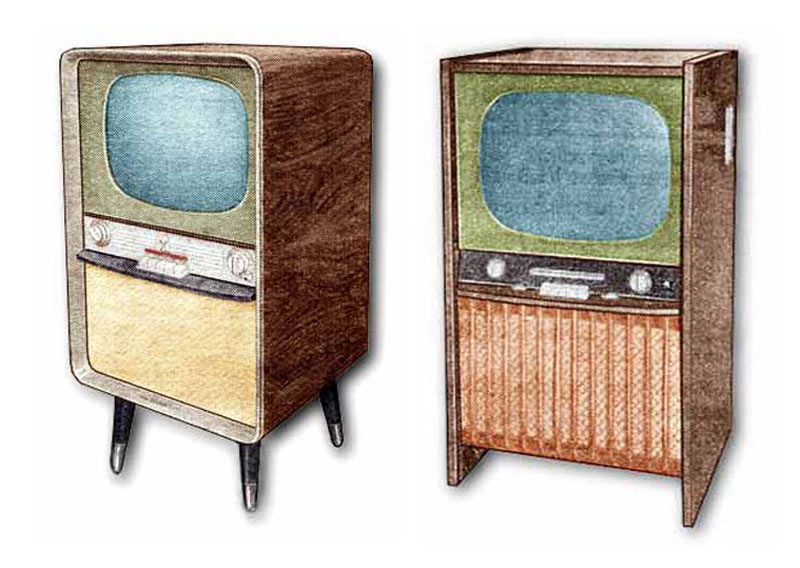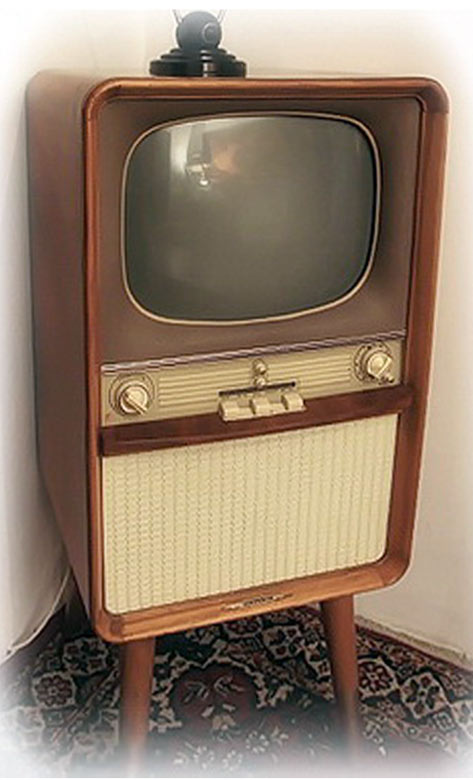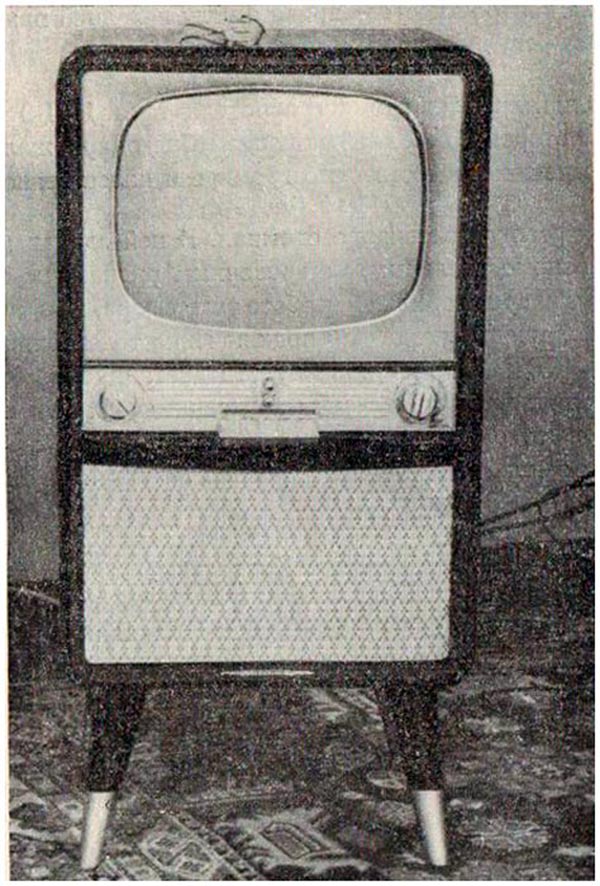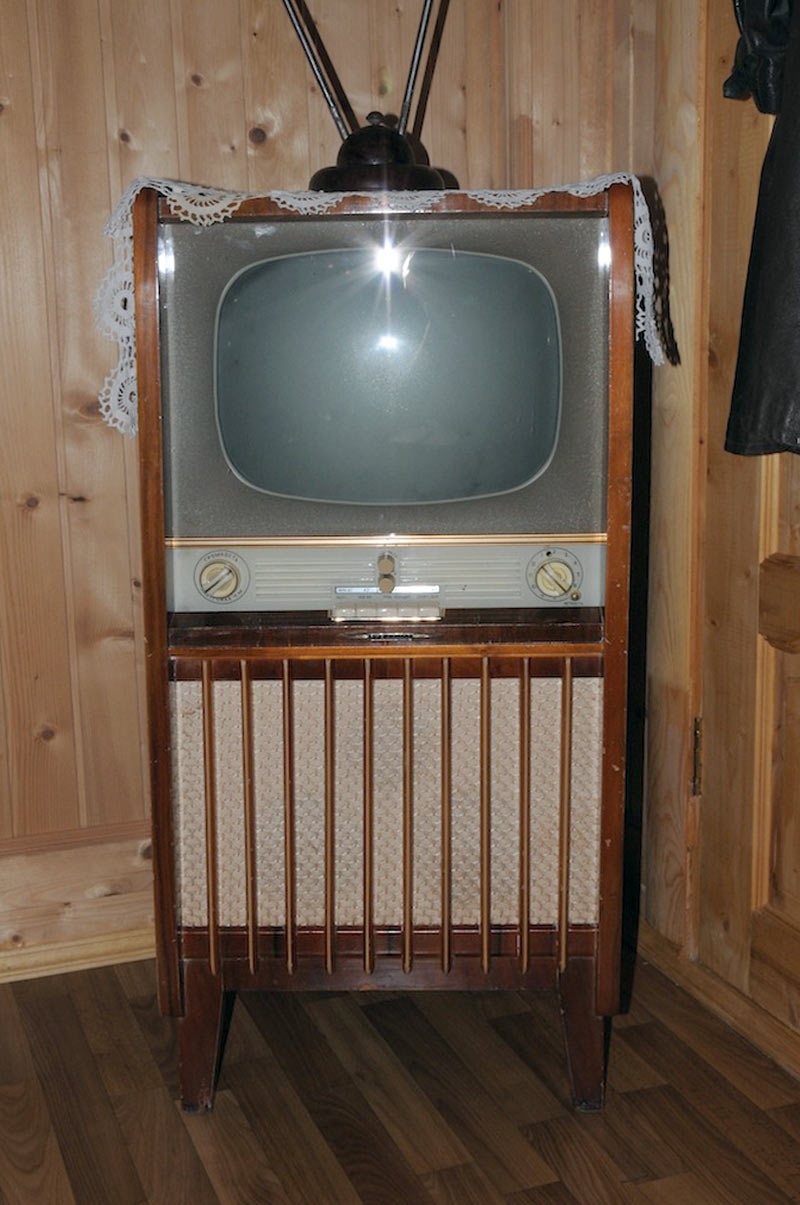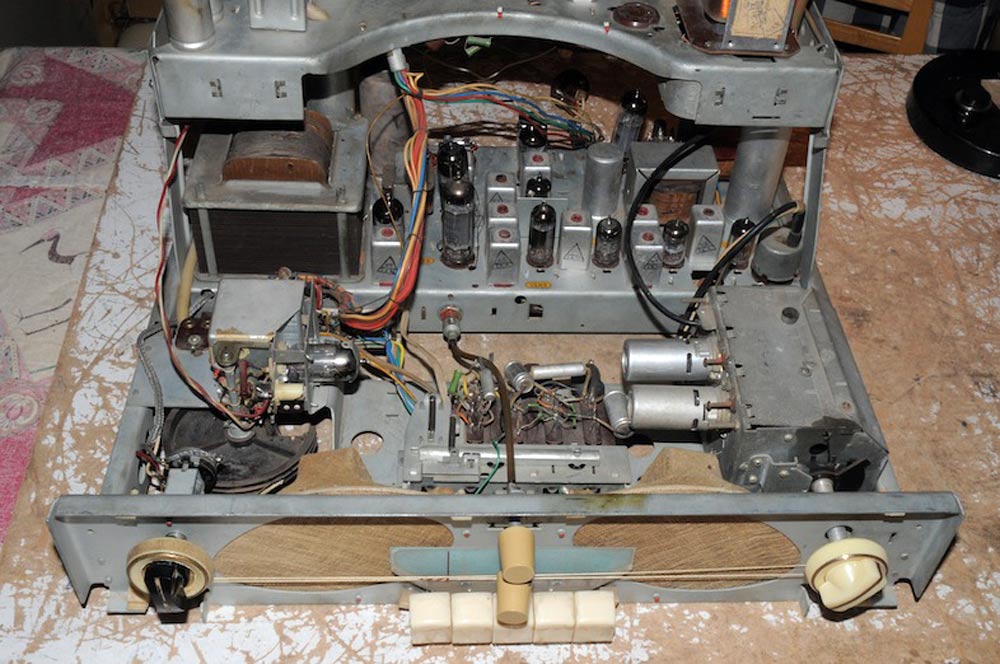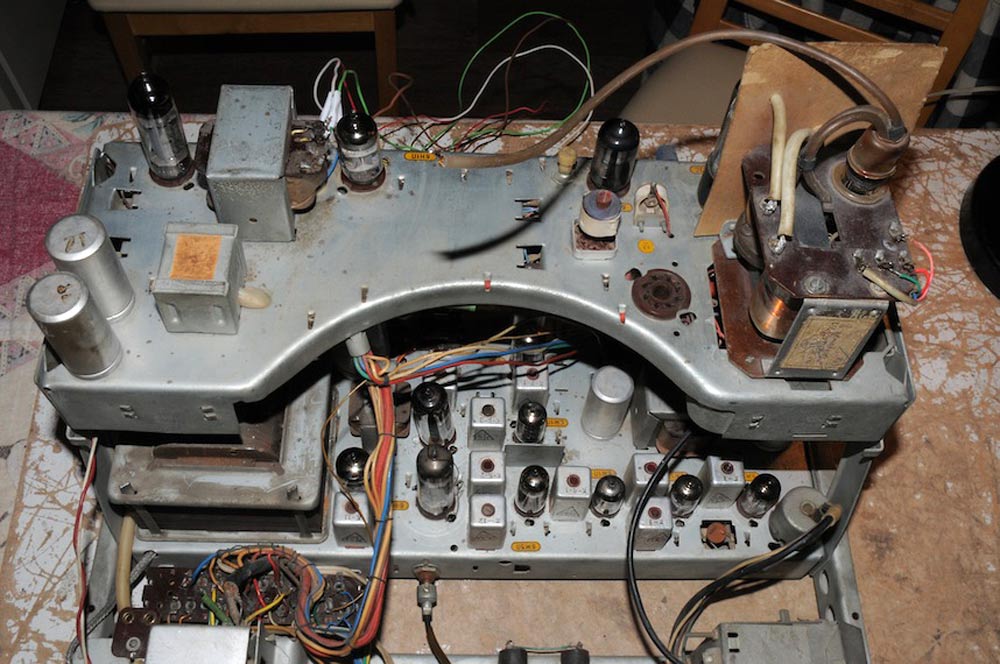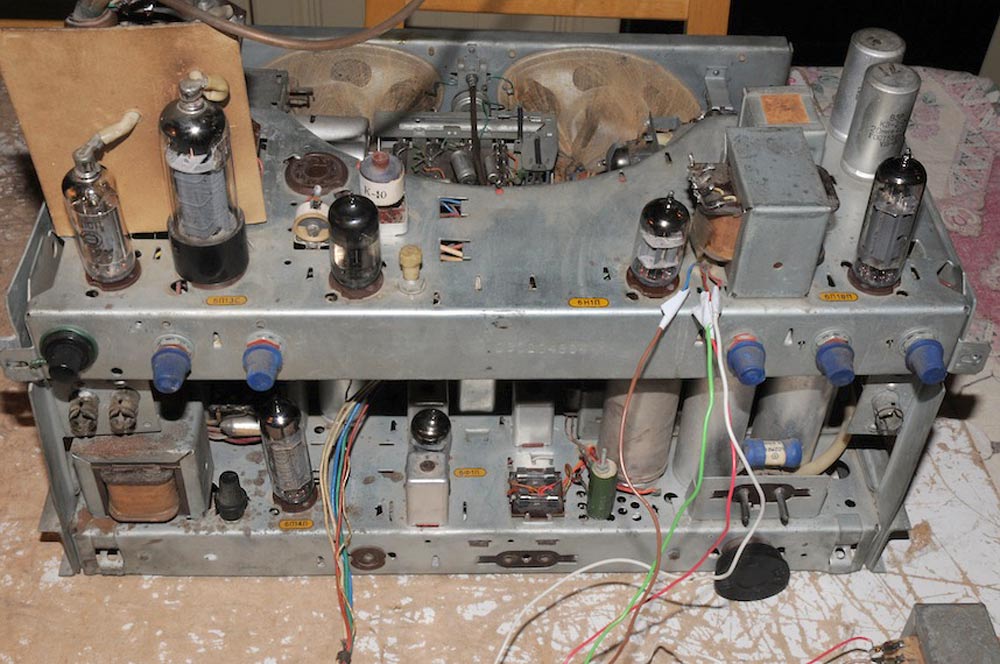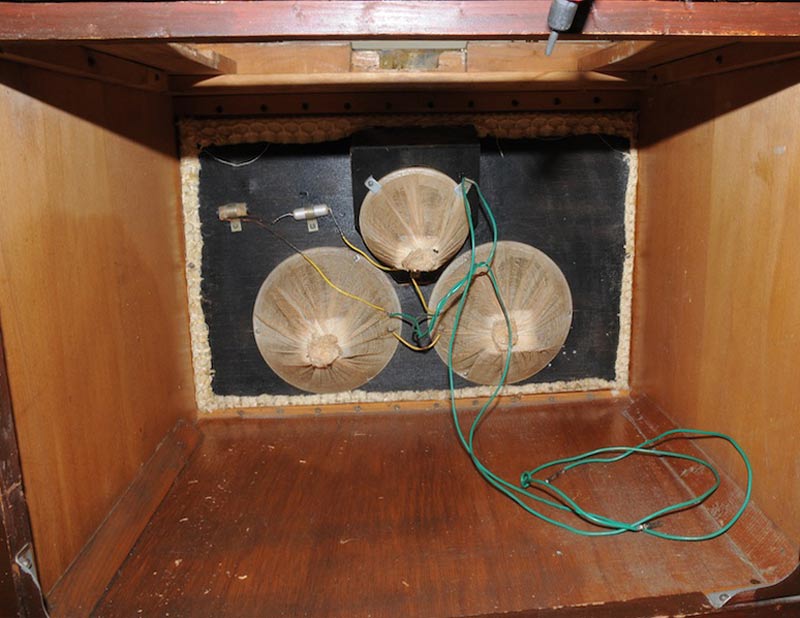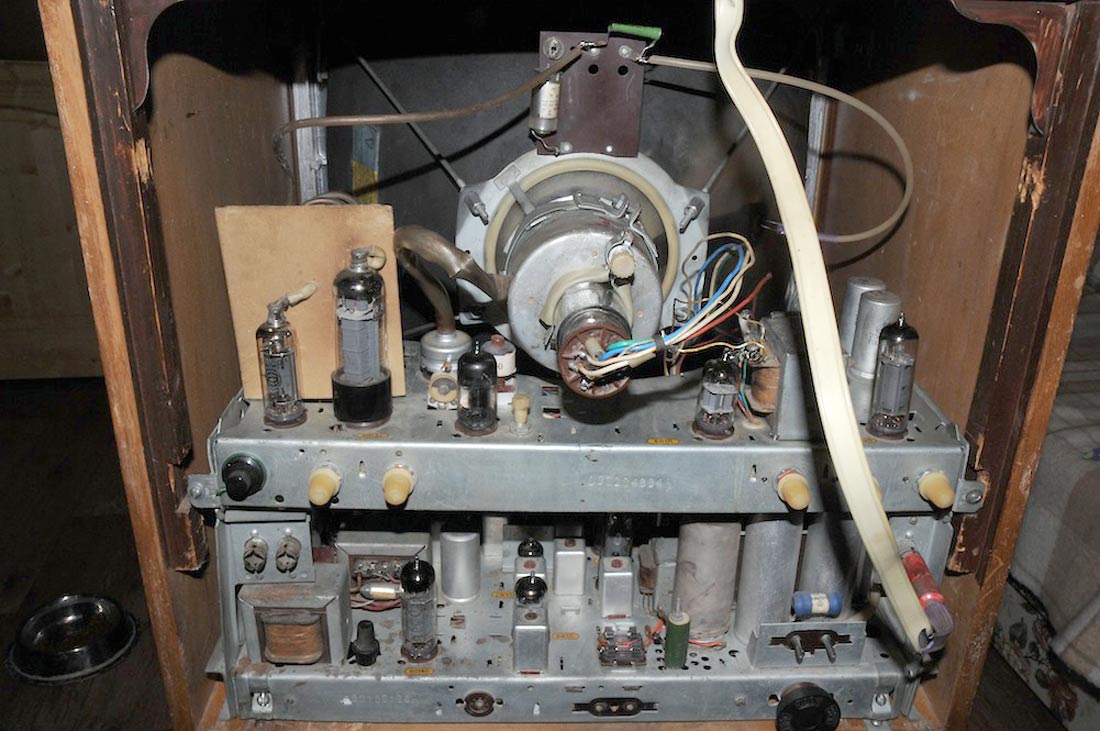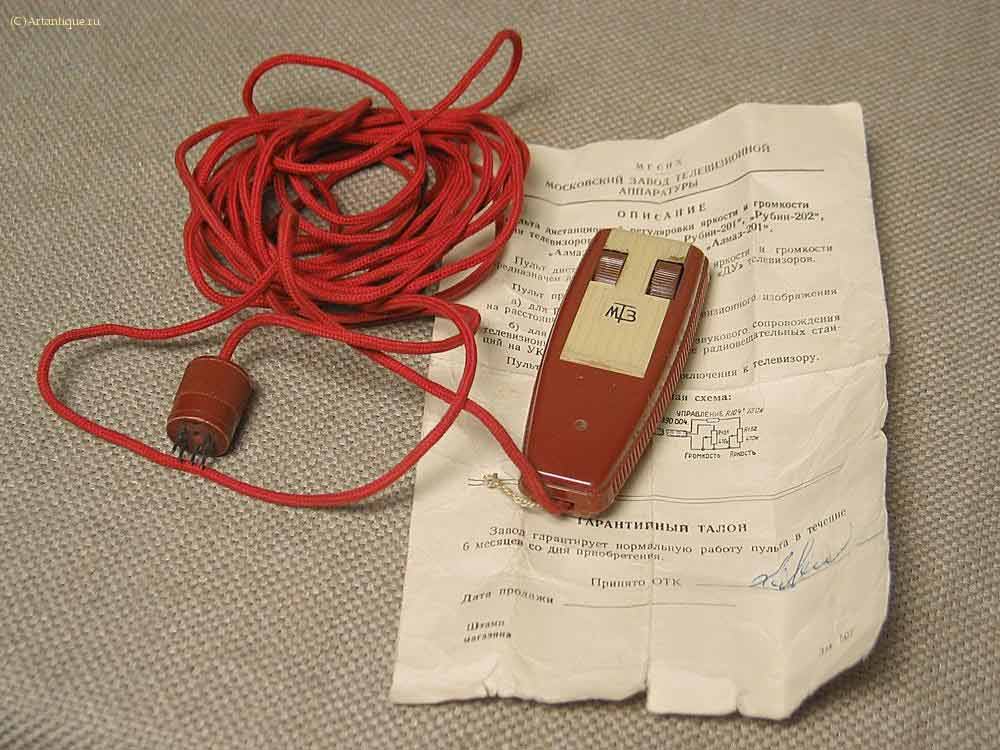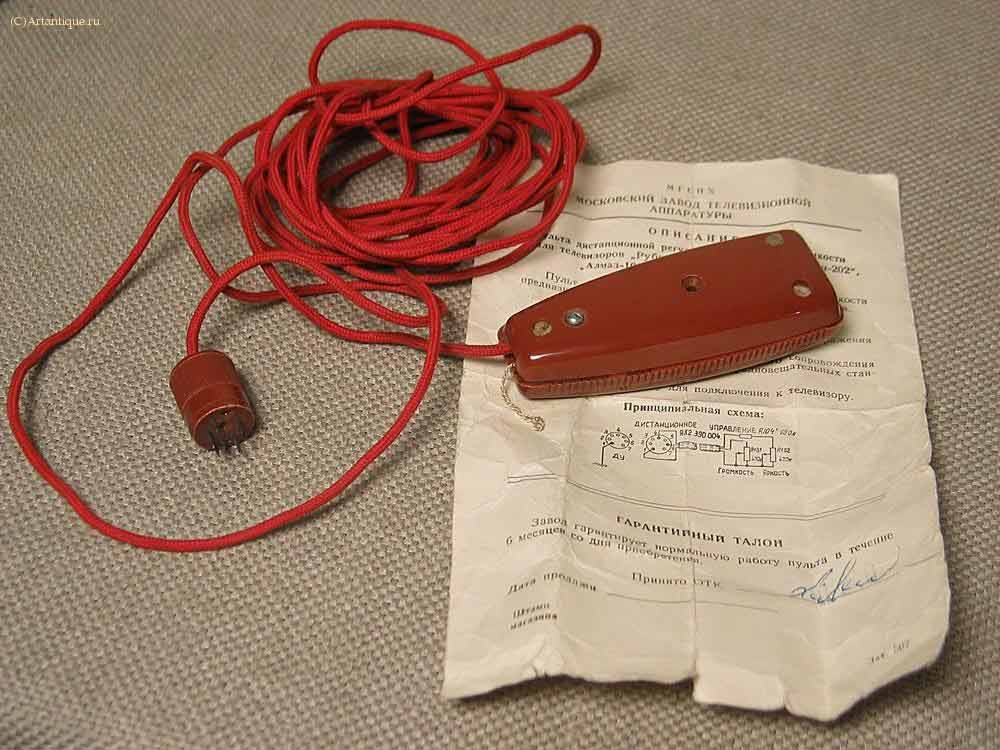Black-and-white television receiver 'Rubin-201'.
Black and white televisionsDomesticSince 1958, the Rubin-201 black-and-white television receiver has been produced by the Moscow Television Plant. On the basis of the Rubin-102 model, the Rubin-202 console model was created with the design similar to the Rubin-201 TV. However, in the production process, in order to expand the range, a similar model began to be produced in a different external design and it also had the name Rubin-202. To avoid confusion, the first model was renamed Rubin-201. The number 2 now denoted the class of the TV. The basic TV Rubin-102 was also of the second class, but the numbers 102 often confused the classification. Both of these TVs have a console design, and there is no need to purchase a table. Both TVs differ from the base model in addition to the appearance of the improved sound system. In both models, 5 loudspeakers are used, two 2GD-3, two 1GD-9 and one VGD-1, with 2GD-3 and VGD-1 located in the lower compartment and 1GD-9 behind the control panel, in the middle. Such a speaker provides powerful and high sound quality, an audio frequency band of 50 ... 15000 Hz, so these TVs can be used when serving a large audience. This is facilitated by the control of TVs at a distance of up to 7 m using a wired remote control. TVs differ from each other only in appearance, otherwise, except for the weight, they are similar to the base model. The price of TVs is 456 rubles 77 kopecks, after the 1961 reform. Engineer developer of TVs "Rubin-201" and "Rubin-202" - Khakharev Veniamin Mikhailovich. The release of the TV Rubin-201 was started in October 1958 and finished in December 1959. During this period, 5100 copies were produced, including 310 copies with the primary name Rubin-202. The production of the Rubin-202 model was started in November 1958 and finished in December 1959. The Rubin-202 models were produced in 7970 pieces. Since 1960, the plant has continued to produce Rubin-202 TV sets again, but in very small quantities, mainly for sale to social institutions such as cultural centers, village and city clubs, libraries, orphanages, homes for the elderly and the disabled, and others. I would like to note that after 1960 the TV “Rubin-202” had twice as high sensitivity, 50 µV, instead of 100 µV as in the basic TV “Rubin-102” or in the TV “Rubin-201”.